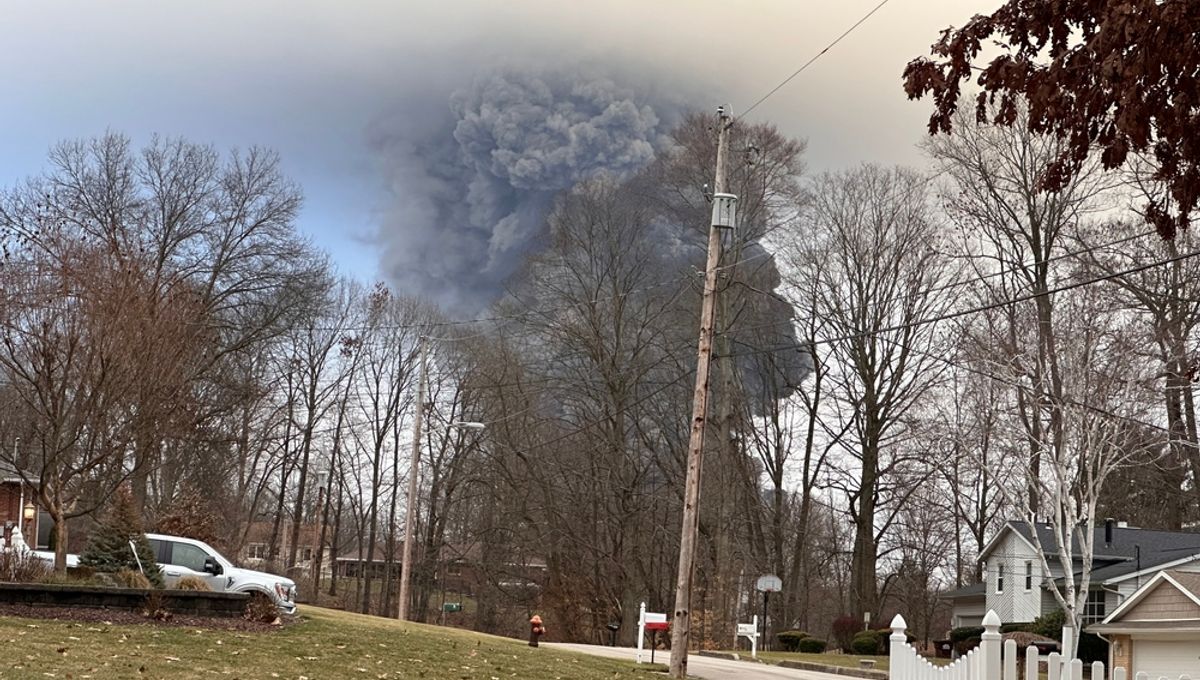
Over three weeks after the toxic train derailment on February 3 in East Palestine, Ohio, a reel of strange and unusual symptoms has started to be reported among local residents. It’s still not clear if and how many of the symptoms are linked to the recent environmental disaster, but the Centers for Disease Control and Prevention (CDC) and other authorities are finally looking into the ways the chemical spill may be impacting locals’ health.
Residents who returned to their homes near the crash site this week claim to have developed rashes, sore throats, nausea, difficulty breathing, burning eyes, and headaches, CNN reports. Other locals and workers have reported bronchitis and other respiratory conditions.
Melissa Blake, who lives within a mile of the crash site, told NBC News that she started to cough up gray mucus and was struggling to breathe two days after the incident. Later that day, she was evacuated from her home and went to the hospital where she was reportedly diagnosed with “acute bronchitis due to chemical fumes.”
Wade Lovett, another local resident, had a similar experience in the days following the accident with complaints of difficulty breathing and even unusual changes to his voice.
“My voice sounds like Mickey Mouse. My normal voice is low. It’s hard to breathe, especially at night. My chest hurts so much at night I feel like I’m drowning. I cough up phlegm a lot. I lost my job because the doctor won’t release me to go to work,” Lovett told the New York Post.
While these symptoms have not yet been officially linked to the derailment, it’s clear that chemicals onboard the train have the potential to cause harm to human health and the environment.
Chief among them is vinyl chloride. After this flammable gas leaked from a number of the train carriages, authorities carried out a controlled burn in a bid to avoid a catastrophic explosion, creating a plume of black smoke that hung over East Palestine for days.
The Environmental Protection Agency (EPA) carried out air monitoring in the area and stated that concentrations of the toxic chemicals had fallen below hazardous levels, so residents were given the go-ahead to return home after being evacuated.
It’s very well known that this chemical is bad news for health. The EPA lists vinyl chloride as a Class A “known human carcinogen”, and lists dizziness, headaches, and drowsiness as possible effects from inhalation. Long-term, lifetime exposure has even been linked to liver disease and a rare form of liver cancer.
A generous amount of criticism has been thrown at the way authorities have dealt with the crisis, with many arguing they have been ignored or sidelined in favor of other political goals.
Almost a month on, however, efforts to understand the situation’s impact on human health are ramping up. Last week, the Ohio Department of Health set up a clinic for residents and carried out 77 appointments in the first three days of its running.
Meanwhile, the CDC has also deployed a team of medical personnel and toxicologists to carry out public health testing in the surrounding area. They claim the results of these tests will be released to the public in due course.
Source Link: Squeaky Voice And Gray Mucus: Locals Link Symptoms To Ohio Train Crash